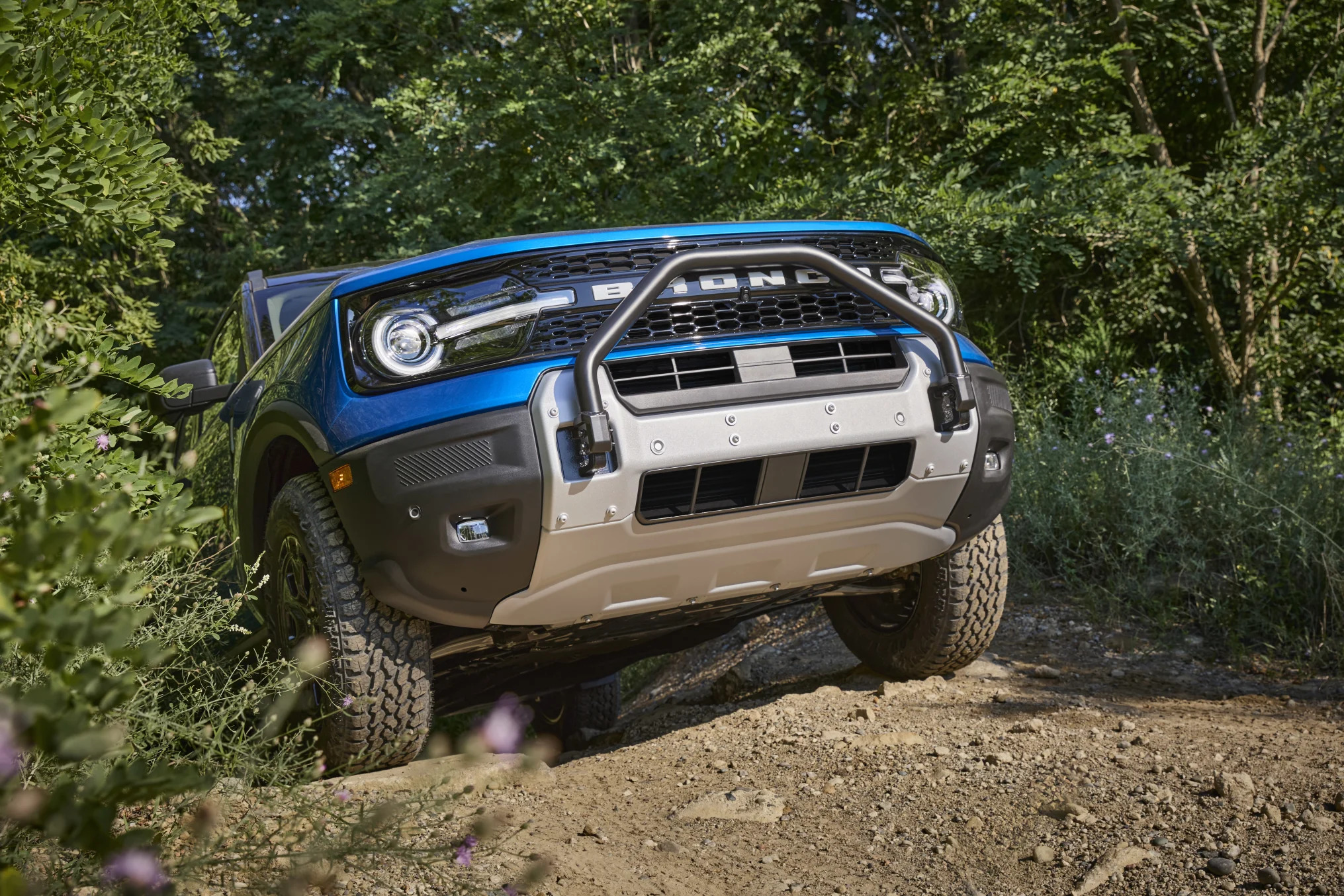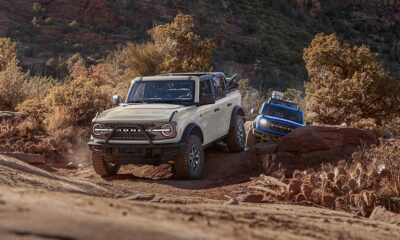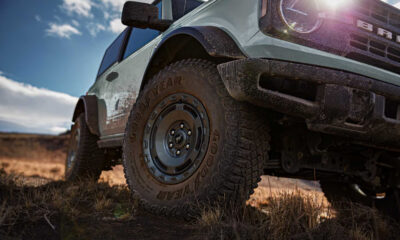-
-
by
Jon Cook
Arizona offers some of the best off-roading opportunities in the U.S. From the rugged trails of the Superstition Mountains to the expansive Tonto National Forest, off-roading enthusiasts have a playground like no other. But before you hit the trails, it’s essential to make sure your Ford is ready for the journey. Whether you’re behind the wheel of a Ford Bronco, F-150, or Ranger, proper prep work ensures a safer and more enjoyable off-road experience.
Follow this step-by-step guide to prepare your Ford for off-roading adventures across Arizona’s toughest terrain.
Check Your Vehicle’s Condition
Before heading out into the wilderness, it’s important to give your vehicle a thorough check. Here’s a list of essential checks to perform:
Tires
• Tire Pressure: Off-roading typically requires lower tire pressure to provide better traction on soft or uneven terrain. Check your manufacturer’s recommendations and consider dropping tire pressure to around 18-22 psi for optimal off-road performance.
• Tire Condition: Ensure your tires are in good condition, with plenty of tread depth for grip. If your tires are worn out, consider upgrading to all-terrain or mud-terrain tires, which are better suited for Arizona’s rocky and sandy trails.
Oil and Fluids
• Engine Oil: Make sure the engine oil is fresh and at the correct level. Off-roading can put stress on your engine, so proper lubrication is key.
• Transmission Fluid: For vehicles with automatic transmissions, check the transmission fluid. Off-roading can overheat transmission systems, so having enough fluid is crucial.
• Coolant: Arizona’s desert heat can quickly overheat a vehicle. Check your radiator and coolant levels to avoid engine damage.
Battery
• Battery Condition: Ensure your battery is in good condition, with clean terminals and sufficient charge. Off-roading can drain your battery, so a healthy one is crucial.
Suspension
• Shock Absorbers: Check that your suspension system is functioning properly, especially your shock absorbers. Consider upgrading to off-road-specific shocks if your vehicle is frequently used for rough trails.
• Lift Kits: If you’re tackling particularly rocky or uneven terrain, a lift kit can provide additional ground clearance, which is especially useful for tackling obstacles in areas like the Pinal Mountains or the Superstition Mountains.
Make the Right Modifications
While stock Ford vehicles are more than capable of handling most off-road situations, certain modifications can take your off-roading experience to the next level. Here are some top modifications to consider:
Upgraded Suspension
Whether you’re driving a Ford F-150, Ranger, or Bronco, upgrading your suspension system can significantly improve your off-road performance. Aftermarket suspension systems with better shocks, struts, and coilovers allow your vehicle to handle rough terrain more effectively, especially when navigating Arizona’s rocky and uneven trails.
Skid Plates
• Skid plates protect your vehicle’s vital undercarriage components (like the oil pan and transmission) from damage when driving over rough trails or obstacles. This is especially important when tackling sharp rocks or boulders found in Tonto National Forest or the Copper Corridor.
Winch
• A winch is a must-have for off-roading. In case you get stuck in mud or sand (which can be common around Arizona’s desert trails), a winch can help pull you out. A front-mounted winch is ideal, and there are many options available depending on your Ford vehicle’s weight and tow capacity.
Off-Road Lighting
• Adding auxiliary lights such as LED light bars or spotlights will improve your visibility on night drives. Arizona’s wilderness can be pitch-black after dark, and having the right lighting is crucial for safety when navigating trails or camping in remote areas.
Roof Racks and Cargo Solutions
• For longer off-road adventures, you’ll need to carry camping gear, extra fuel, or water. A roof rack or bed rack allows you to store extra equipment while keeping the interior of your vehicle free for passengers. This is especially useful for overlanding trips through areas like Roosevelt Lake or Apache Junction.
Ensure Trail Safety and Emergency Preparedness
Off-roading in remote areas means you’ll need to be prepared for unexpected situations. Here’s a list of items and tips to keep you safe:
Emergency Kit
• Pack an emergency kit that includes a first aid kit, flashlights, blankets, fire starter, multi-tool, and extra food and water. It’s essential to be ready for anything, especially if you’re exploring Arizona’s wilderness far from the nearest help.
Recovery Gear
• In addition to a winch, make sure you have tow straps, recovery boards, and shackles. These tools are invaluable if you get stuck or need to assist someone else on the trail.
GPS and Communication Devices
• A GPS system is essential for off-roading, especially when exploring remote areas like the Superstition Mountains or the San Carlos Apache Reservation. Always have a satellite phone or two-way radio for communication in case of emergencies, as cell service can be spotty in these regions.
Trail Maps and Permits
• Some off-road areas in Arizona require a permit, especially in national forests and protected regions. Make sure you’re familiar with trail maps and check if any specific permits are required before venturing into areas like Tonto National Forest or Cave Creek.
Know the Terrain and Trail Etiquette
Understanding the terrain you’ll be driving on is crucial. Arizona offers a variety of landscapes, including deserts, forests, and mountains, each with its own challenges.
• Desert Trails: Trails in Arizona’s desert regions, like those near Roosevelt Lake or Salt River, can be sandy or muddy, requiring extra care. Lowering your tire pressure and using 4WD can help with traction.
•Mountain Trails: In places like the Superstition Mountains or the Pinal Mountains, the terrain can be steep and rocky. Using low-range gearing on your Ford vehicle will help prevent overheating and ensure better control.
• Trail Etiquette: Always respect other trail users, stay on designated paths, and be cautious when navigating tight spaces. Yield to hikers and cyclists, and make sure to leave no trace by packing out all trash.
Test Your Setup Before the Big Adventure
Before heading out on a major off-roading trip, test your vehicle on a shorter trail. This will allow you to assess your vehicle’s readiness and make any necessary adjustments. Arizona has a wealth of shorter off-road trails that provide a great opportunity for testing, such as those near Apache Trail or Lake Pleasant.
Conclusion: Get Ready to Conquer Arizona’s Trails
By following these steps and preparing your Ford for off-roading, you’ll be ready to take on Arizona’s diverse and rugged trails, from the Tonto National Forest to the Copper Corridor. Whether you’re driving a Ford Bronco, F-150, or Ranger, the right modifications and preparation will ensure your off-roading adventures are both safe and fun. Make sure to check your vehicle thoroughly, invest in the right accessories, and always prioritize safety when heading into Arizona’s wild terrain.
Originally from the United Kingdom, Jon is new to the outdoor experiences that Arizona offers. Having resided in the Copper Corridor for the last 15+ years he is finally glad to see what Arizona really has to offer.











